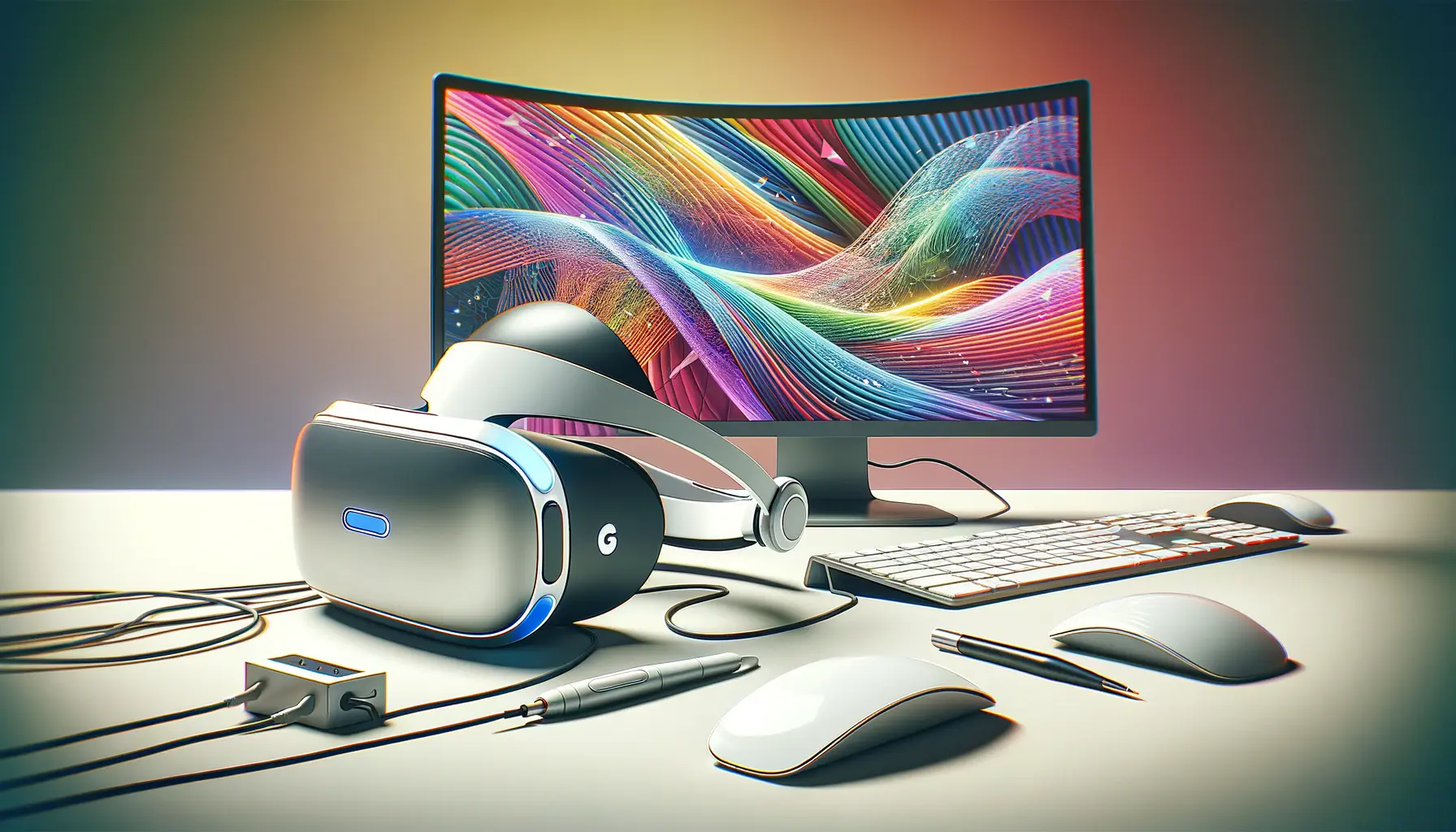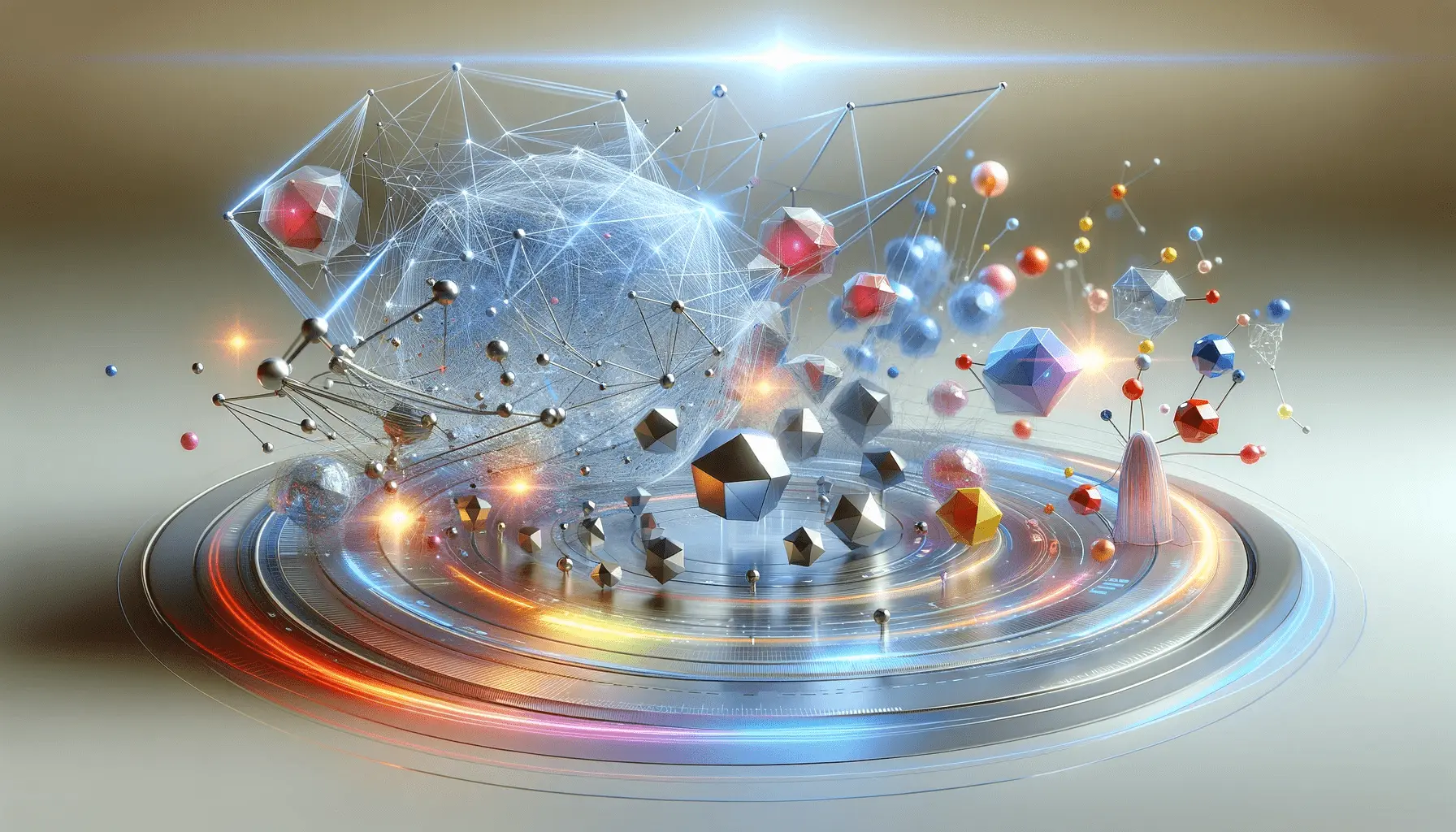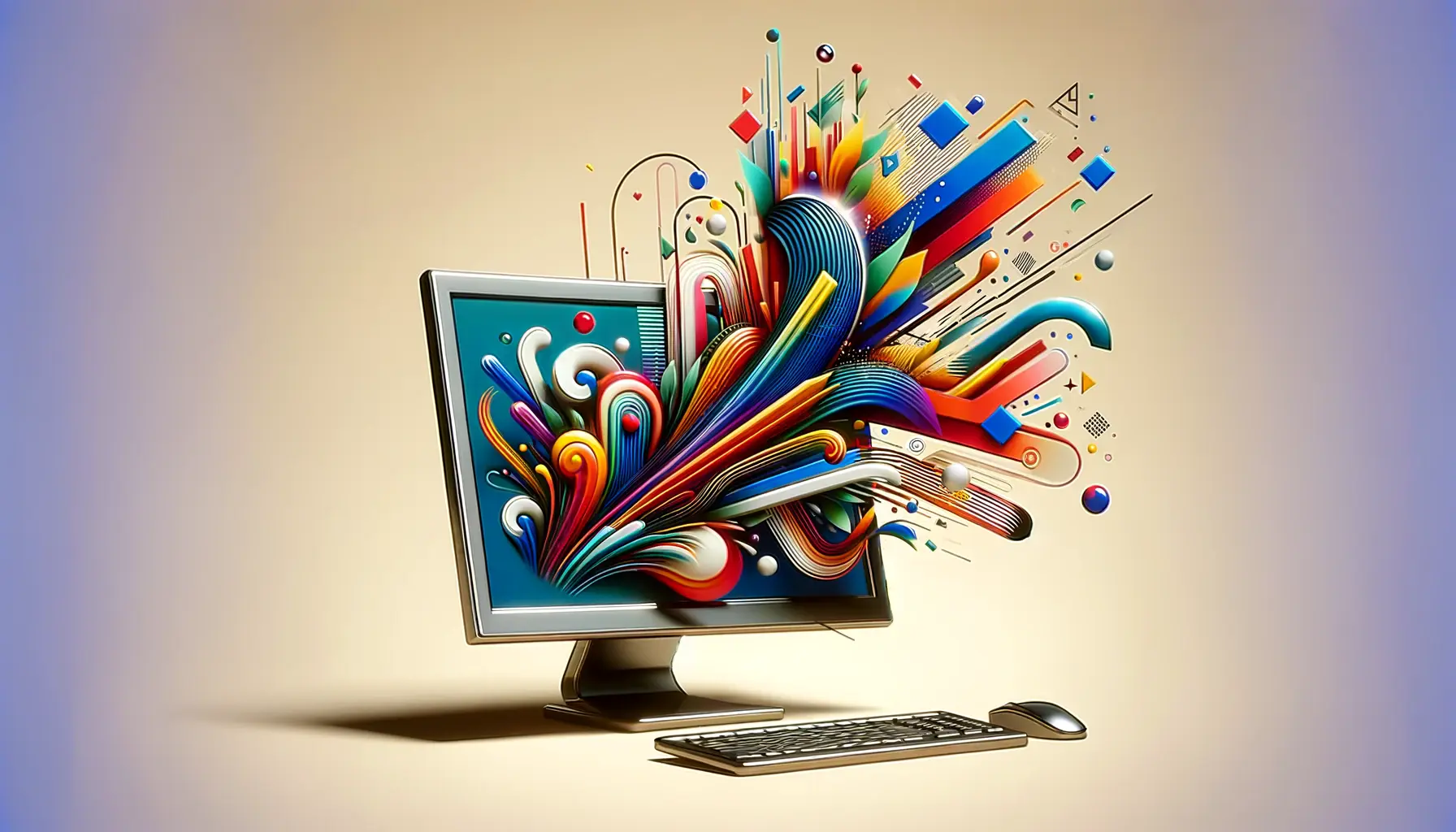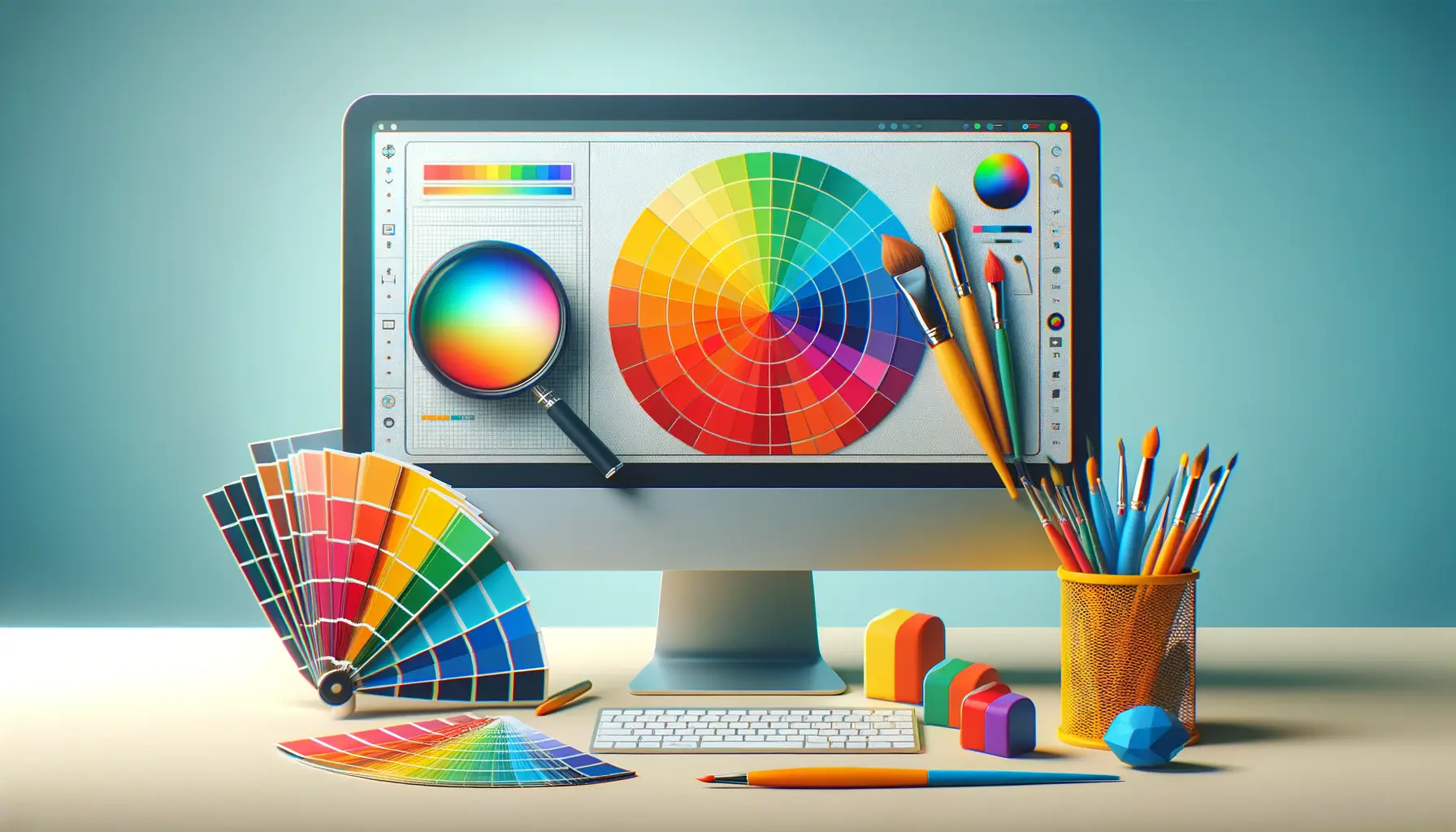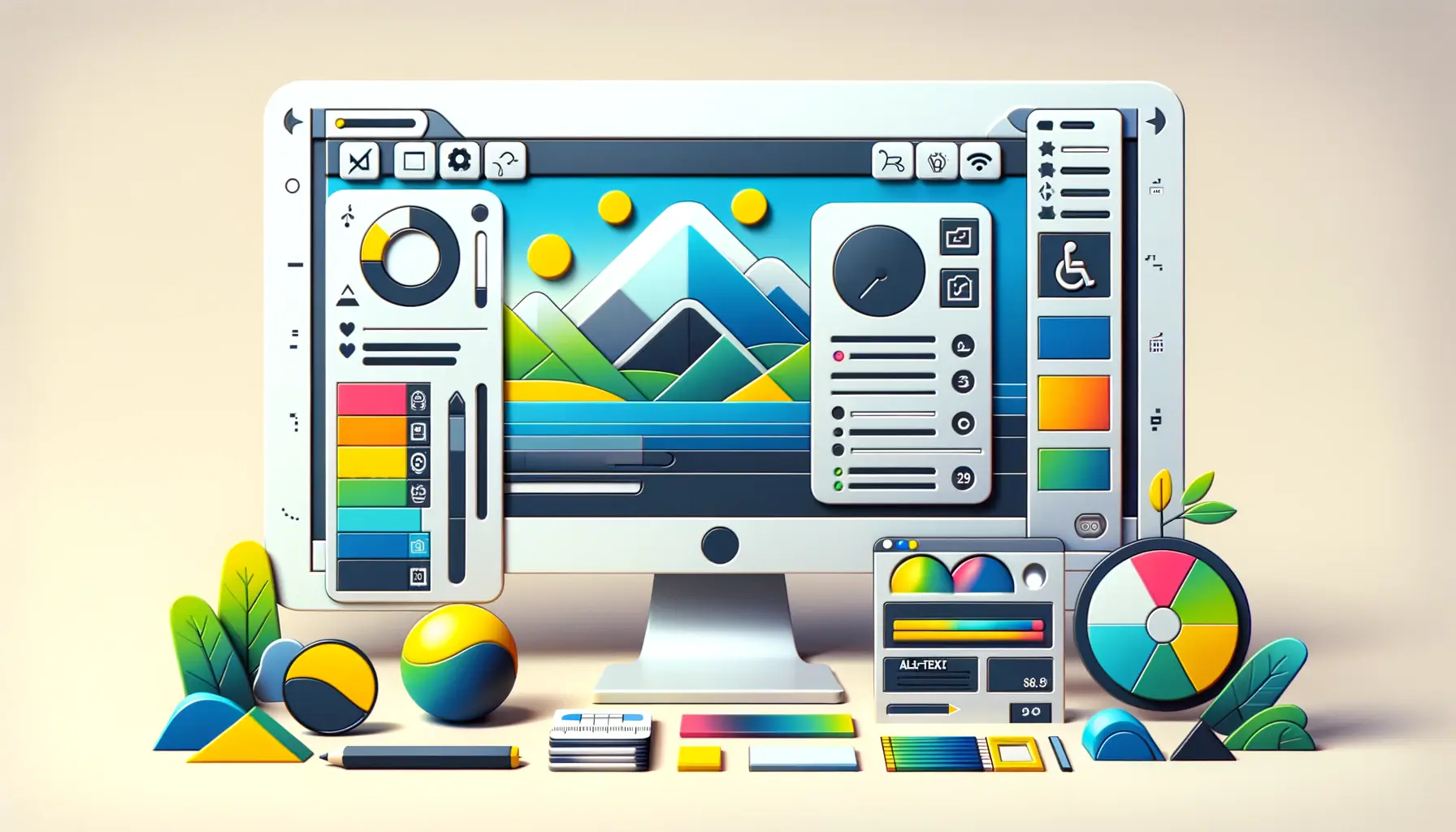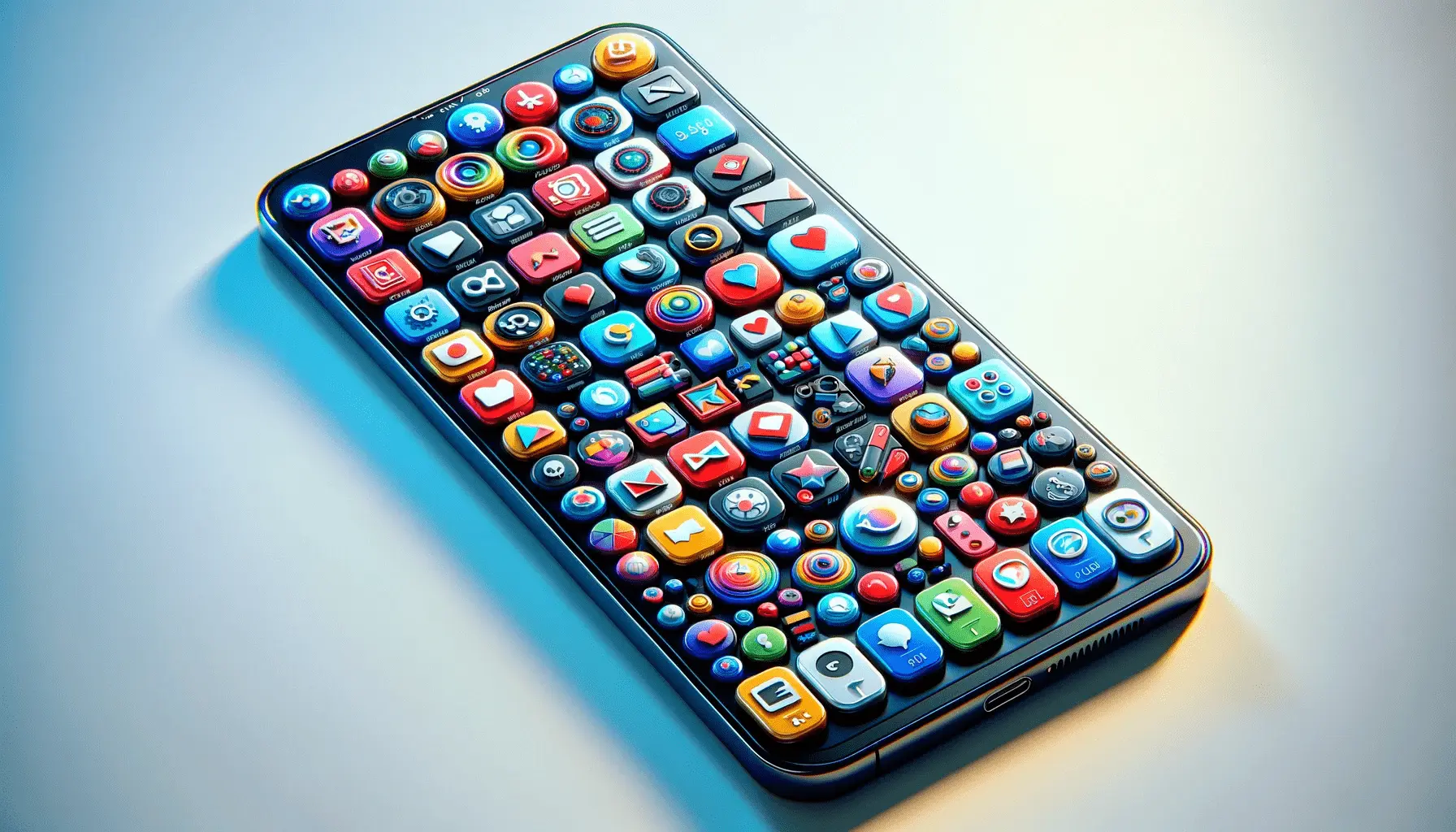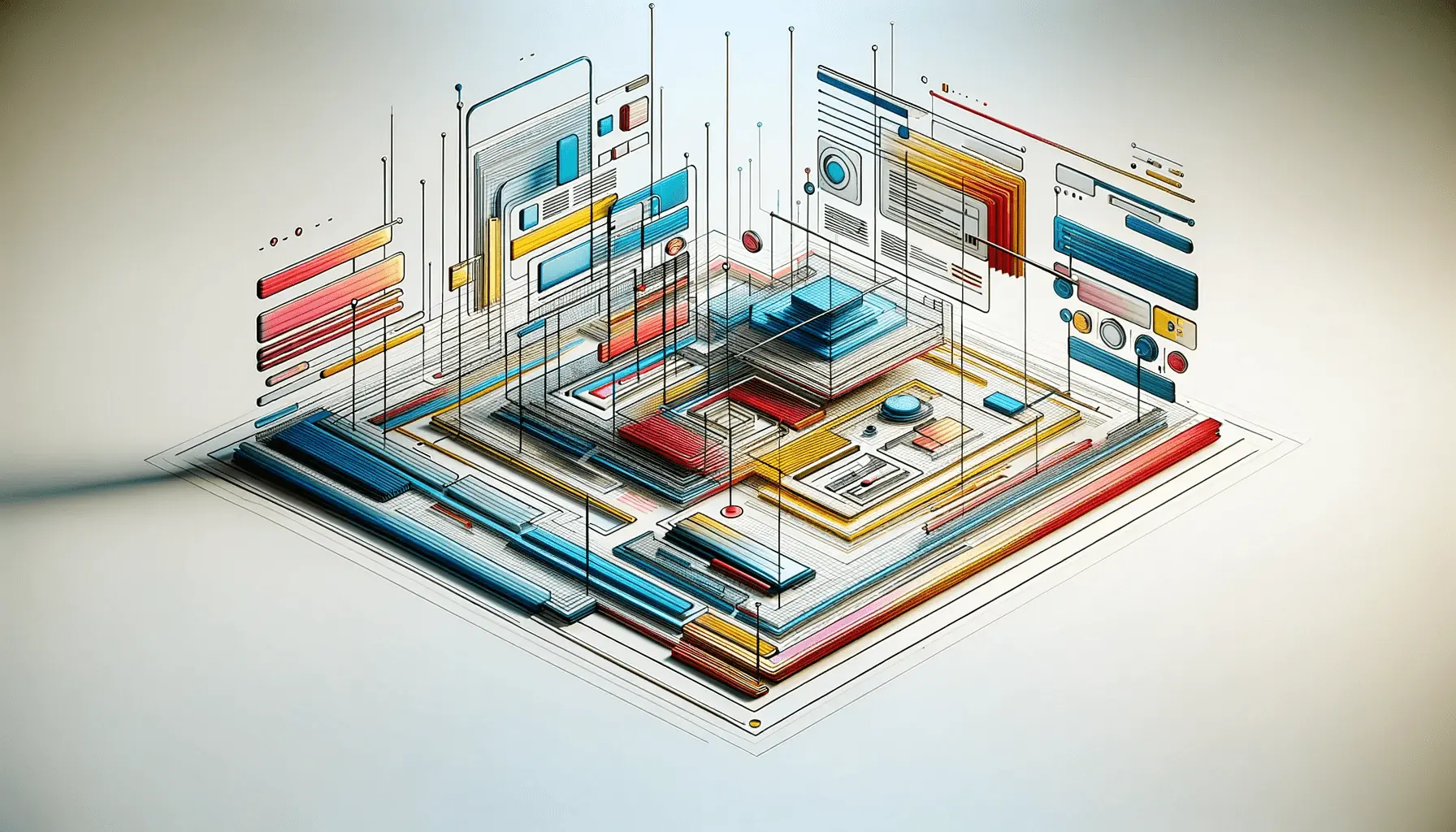WebGL, standing for Web Graphics Library, has revolutionized the way we perceive and interact with graphics on the web.
This powerful JavaScript API enables web developers and designers to render interactive 3D and 2D graphics within any compatible web browser, without the need for plugins.
The essence of WebGL lies in its ability to provide a direct link between the browser and the graphics hardware, allowing for the creation of sophisticated visual experiences that were previously only possible in native applications.
The integration of WebGL into web design not only enhances the visual appeal of websites but also opens up a myriad of possibilities for user interaction and engagement.
From immersive game experiences to data visualization and virtual tours, WebGL has paved the way for innovative web applications that push the boundaries of what’s possible on the web.
Its compatibility with modern web browsers and support for hardware-accelerated graphics make it an indispensable tool in the arsenal of today’s web developers.
- The Core of WebGL: Understanding Its Capabilities
- Expanding the Horizon: Advanced WebGL Techniques
- Frameworks and Libraries: Simplifying WebGL Development
- WebGL for Interactive Data Visualization
- Enhancing User Experience with WebGL
- Challenges and Considerations in WebGL Development
- Future Trends and Evolution of WebGL
- Embracing the Future with WebGL
- Exploring WebGL for 3D Graphics: Frequently Asked Questions
The Core of WebGL: Understanding Its Capabilities
At its core, WebGL is built on the principles of OpenGL ES, a software API that is widely used for rendering graphics in mobile applications and games.
This foundation allows WebGL to leverage the full potential of the user’s graphics processing unit (GPU), enabling complex animations, realistic lighting and shadows, and intricate 3D models to be rendered with high performance.
The ability to use WebGL for creating detailed graphics without significantly affecting the website’s loading time is a testament to its efficiency and power.
WebGL’s versatility extends beyond mere visual flair.
It supports a range of functionalities that are crucial for modern web applications, including texture mapping, geometric transformations, and dynamic lighting effects.
These features allow developers to create not only visually stunning websites but also applications that can visualize data in three dimensions, provide interactive educational content, and much more.
Getting Started with WebGL
For those looking to dive into the world of WebGL, the journey begins with understanding its basic concepts and architecture.
A WebGL application typically starts with creating a canvas element in HTML, which acts as the viewport for rendering graphics.
The WebGL context is then obtained from this canvas, serving as the gateway for drawing shapes, managing textures, and implementing shaders.
Shaders, written in GLSL (OpenGL Shading Language), are small programs that run on the GPU and determine how pixels and vertices are processed to produce the final image.
Despite its capabilities, getting started with WebGL can be daunting due to its low-level nature and the requirement for a good understanding of both programming and graphics concepts.
However, numerous resources, tutorials, and frameworks have emerged to ease this learning curve.
Among these, Three.js stands out as a popular library that abstracts many of WebGL’s complexities, allowing developers to focus on creating content rather than dealing with the intricacies of WebGL’s API.
WebGL’s integration into web design not only elevates the aesthetic quality of websites but also unlocks new possibilities for user interaction and engagement, making it a key technology for the future of web development.
Expanding the Horizon: Advanced WebGL Techniques
As developers become more familiar with the basics of WebGL, they can explore advanced techniques that further enhance the visual quality and interactivity of web applications.
These advanced methods leverage WebGL’s full potential to create experiences that are not only visually appealing but also highly performant and interactive.
Understanding and implementing these advanced techniques requires a deeper dive into WebGL’s capabilities, pushing the boundaries of what’s traditionally expected from web content.
Here are some key areas where advanced WebGL techniques can make a significant impact:
Shader Programming and GLSL
- Shaders are at the heart of WebGL’s rendering capabilities, allowing for the manipulation of pixels and vertices to create dynamic visual effects. Advanced shader programming involves creating custom shaders for effects like realistic water, dynamic shadows, and post-processing effects.
- GLSL, the shading language used in WebGL, enables developers to write these custom shaders. Mastery over GLSL opens up endless possibilities for creative expression through graphics programming.
Performance Optimization
- Optimizing WebGL applications for performance is crucial for maintaining smooth user experiences, especially in complex scenes or applications running on limited hardware. Techniques such as minimizing draw calls, using efficient data structures, and optimizing shader code are essential.
- Developers can also leverage WebGL extensions to access advanced GPU features, further enhancing performance and visual fidelity.
Interactive 3D Models and Animations
- Creating interactive 3D models involves more than just rendering static objects. Developers can implement user controls, animate models based on physics or predefined animations, and create complex scenes with multiple interacting objects.
- These techniques require a good understanding of 3D mathematics, collision detection, and animation principles, showcasing the depth of knowledge needed to create interactive WebGL content.
Advanced WebGL techniques, such as shader programming, performance optimization, and the creation of interactive 3D models, require a deeper understanding of both programming and graphics concepts but significantly enhance the quality and interactivity of web applications.
Frameworks and Libraries: Simplifying WebGL Development
The complexity and low-level nature of WebGL can be a barrier to entry for web developers interested in adding 3D graphics to their applications.
Fortunately, a variety of frameworks and libraries have been developed to simplify WebGL development, making it more accessible and reducing the time required to create stunning visual content.
These tools abstract away much of the complexity involved in direct WebGL programming, allowing developers to focus on the creative aspects of their projects.
Choosing the right framework or library can significantly impact the development process and the final outcome of a project.
Here’s a look at some of the most popular and powerful WebGL frameworks and libraries available today:
Three.js: The Leading WebGL Library
- Three.js is arguably the most popular library for working with WebGL. It provides a high-level API for creating and displaying animated 3D computer graphics in a web browser. Three.js simplifies the process of setting up a 3D scene, adding objects, and rendering those objects with WebGL.
- With a vast community and extensive documentation, Three.js is an excellent choice for both beginners and experienced developers looking to create interactive 3D applications without delving into the complexities of raw WebGL.
Babylon.js: A Powerful Alternative
- Babylon.js is another comprehensive library for building 3D games and experiences on the web. It provides a rich set of features, including physics engines, advanced materials, and touch controls, making it suitable for creating complex interactive scenes.
- Its active community and strong support for virtual reality (VR) and augmented reality (AR) experiences make Babylon.js a compelling option for developers looking to push the boundaries of web-based 3D content.
A-Frame: WebVR Made Simple
- A-Frame is a web framework for building virtual reality experiences. Built on top of Three.js, it allows developers to create VR content using HTML-like syntax, making it accessible to web developers without prior 3D programming experience.
- A-Frame is designed with a focus on VR but also supports non-VR 3D scenes, offering a straightforward path for web developers to explore the world of immersive 3D content.
While direct WebGL programming offers the most control and flexibility, frameworks and libraries like Three.js, Babylon.js, and A-Frame provide powerful abstractions that simplify the development process, making 3D web content creation more accessible to developers of all skill levels.
WebGL for Interactive Data Visualization
One of the most compelling uses of WebGL is in the field of data visualization.
The ability to render complex, interactive 3D graphics in real-time opens up new avenues for presenting and exploring large datasets.
Interactive data visualization allows users to engage with information in more meaningful ways, uncovering insights that might not be apparent in traditional 2D presentations or static charts.
WebGL’s capacity to handle vast amounts of data and render it efficiently makes it an ideal choice for developing sophisticated data visualization tools.
These tools can range from simple 3D bar charts to intricate simulations representing complex systems or phenomena.
Creating Immersive Data Experiences
- By leveraging WebGL, developers can create data visualizations that are not only informative but also immersive. Users can interact with the data, exploring different perspectives, zooming in on areas of interest, and even manipulating variables in real-time to see the effects.
- This level of interactivity encourages deeper engagement with the data, facilitating a better understanding of the underlying patterns, trends, and correlations.
Examples of WebGL in Data Visualization
- Geospatial data visualization is a prime example where WebGL shines. Mapping applications can render detailed 3D terrain models, allowing users to navigate through landscapes, explore geographic data layers, and analyze spatial information in an intuitive way.
- Scientific visualization is another area where WebGL’s capabilities are invaluable. From visualizing molecular structures in biology to simulating fluid dynamics in physics, WebGL enables researchers and educators to create interactive models that enhance understanding and discovery.
WebGL transforms data visualization by enabling the creation of interactive, immersive experiences that allow users to explore and understand complex datasets in intuitive and engaging ways.
Enhancing User Experience with WebGL
WebGL is not just about creating visually stunning graphics or complex data visualizations; it’s also a powerful tool for enhancing the overall user experience on the web.
By integrating interactive 3D elements into web applications, developers can create more engaging and memorable experiences that captivate users and encourage them to explore further.
From subtle background animations to interactive product showcases, WebGL can be used to add a layer of depth and interactivity that traditional web technologies cannot achieve.
This enhanced user experience can lead to increased user engagement, higher retention rates, and ultimately, a more successful web application.
Interactive Product Showcases
- One of the most effective uses of WebGL in enhancing user experience is through interactive product showcases. WebGL allows for the creation of detailed 3D models of products that users can rotate, zoom, and interact with. This level of interaction provides a much richer experience than static images or videos, giving users a better sense of the product’s features and quality.
- Such interactive showcases are particularly beneficial for e-commerce websites, where the ability to closely examine a product can significantly influence purchasing decisions.
Immersive Storytelling and Brand Experiences
- WebGL also opens up new possibilities for immersive storytelling and creating unique brand experiences. By combining 3D graphics with multimedia content, companies can tell their stories in a more dynamic and engaging way, creating a strong emotional connection with their audience.
- This approach is especially effective for campaigns that aim to stand out and leave a lasting impression on the viewer, leveraging the power of WebGL to create experiences that are not just seen, but felt.
The integration of WebGL into web applications offers a unique opportunity to enhance user experience, making websites not just a source of information, but a destination for memorable experiences.
Challenges and Considerations in WebGL Development
While WebGL offers unparalleled opportunities for creating interactive 3D content on the web, it also presents a set of challenges and considerations that developers must navigate.
Understanding these challenges is crucial for successful WebGL development, ensuring that applications are not only visually impressive but also accessible, performant, and secure.
From performance optimization to cross-browser compatibility, developers must address several key issues to create effective WebGL applications.
Here’s an overview of some of the primary challenges and considerations in WebGL development:
Performance Optimization
- One of the most significant challenges in WebGL development is optimizing performance to ensure smooth, responsive experiences across a wide range of devices and systems. This involves careful management of resources, such as minimizing the number of draw calls and optimizing asset sizes.
- Developers must also consider the computational complexity of shaders and the impact of high-polygon models on rendering times, employing techniques like level of detail (LOD) to maintain performance without compromising visual quality.
Cross-Browser and Cross-Platform Compatibility
- Ensuring that WebGL content runs consistently across different browsers and platforms is another critical challenge. While modern browsers widely support WebGL, differences in implementation and supported features can affect how content is rendered.
- Developers must test their applications extensively across various environments and may need to implement fallbacks or adjustments to accommodate specific limitations or bugs in certain browsers.
Accessibility and Usability
- Creating accessible WebGL content is essential for reaching a broader audience, including users with disabilities. This includes providing alternative text descriptions for 3D content, ensuring keyboard navigability, and considering color contrast and readability.
- Usability considerations, such as intuitive controls and clear user interfaces, are also crucial for making WebGL applications user-friendly and engaging for all users.
Ignoring the challenges of performance optimization, cross-browser compatibility, and accessibility can significantly hinder the success of WebGL projects, underscoring the importance of addressing these issues from the outset of development.
Future Trends and Evolution of WebGL
The future of WebGL is incredibly promising, with ongoing advancements and emerging trends that continue to push the boundaries of what’s possible in web-based graphics.
As technology evolves, so too does the potential for even more immersive, interactive, and complex web applications.
The continuous improvement of hardware capabilities, combined with the development of new web standards, suggests that WebGL will play a pivotal role in the future of web design and development.
Looking ahead, several key trends are likely to influence the evolution of WebGL, shaping the way developers create and users interact with 3D web content.
Increased Integration with Emerging Technologies
- One significant trend is the integration of WebGL with other emerging technologies such as augmented reality (AR), virtual reality (VR), and artificial intelligence (AI). This convergence enables the creation of more sophisticated and interactive experiences, from educational tools and virtual tours to complex simulations and games.
- As these technologies become more accessible, developers will have new opportunities to innovate and create applications that were previously unimaginable, further blurring the lines between digital and physical realities.
Enhancements in Performance and Accessibility
- Future developments in WebGL are also likely to focus on enhancing performance and accessibility. This includes optimizing rendering processes, improving support for low-end devices, and developing more robust frameworks and tools that simplify the creation of accessible content.
- As the web becomes increasingly inclusive, ensuring that WebGL content is accessible to all users will be a critical consideration for developers, driving innovations in how 3D content is presented and interacted with.
WebGL and the Web of Tomorrow
- The ongoing evolution of web standards and the increasing power of web browsers suggest that WebGL will continue to be a cornerstone of interactive web content. With the potential for more realistic graphics, complex simulations, and seamless integration with other web technologies, the future of WebGL is not just about what we can see, but also how we interact with the web.
- As we look to the future, it’s clear that WebGL will remain at the forefront of web development, enabling creators to bring their most ambitious visions to life and offering users experiences that are more engaging, immersive, and interactive than ever before.
The future of WebGL is marked by its integration with emerging technologies, enhancements in performance and accessibility, and its role in shaping the interactive web of tomorrow. As WebGL continues to evolve, it will undoubtedly unlock new possibilities for creativity and innovation in web design and development.
Embracing the Future with WebGL
As we’ve journeyed through the intricacies and possibilities of WebGL for 3D graphics in web design, it’s clear that this technology is not just a fleeting trend but a cornerstone of modern web development.
The ability to render complex, interactive 3D graphics directly in web browsers has opened up a new realm of possibilities for developers and designers alike, enabling the creation of experiences that engage, inform, and captivate users in ways previously unimaginable.
The Path Forward with WebGL
The evolution of WebGL is a testament to the web’s potential to host increasingly sophisticated and immersive content.
As we look to the future, the integration of WebGL with emerging technologies like VR, AR, and AI promises to further expand the boundaries of what’s possible, offering new ways to interact with digital content and blurring the lines between the virtual and the real.
The ongoing enhancements in performance and accessibility will ensure that these experiences can be enjoyed by a wider audience, making the web a more inclusive space.
WebGL: A Catalyst for Innovation
WebGL stands as a catalyst for innovation in web design and development, encouraging creators to push the limits of their imagination and explore new forms of expression.
Its role in the future of the web is undeniable, offering a platform for experiences that are not only visually stunning but also deeply interactive and engaging.
As WebGL continues to evolve, it will undoubtedly play a pivotal role in shaping the future of digital experiences, making it an exciting time for both developers and users.
- The integration of WebGL with VR, AR, and AI will unlock new dimensions of web experiences.
- Enhancements in performance and accessibility will make WebGL content more accessible to a broader audience.
- WebGL’s role in the future of web development is secure, promising a web that is more immersive, interactive, and visually captivating.
In conclusion, WebGL for 3D graphics in web design is more than just a tool for creating beautiful visuals; it’s a gateway to the future of web experiences.
As developers and designers continue to explore its potential, we can expect to see web applications that are not only more engaging and interactive but also more inclusive and accessible.
The journey with WebGL is just beginning, and its impact on the web will be felt for years to come.
Quality web design is key for a great website! Check out our service page to partner with an expert web design agency.
Exploring WebGL for 3D Graphics: Frequently Asked Questions
Delve into the most common inquiries surrounding WebGL and its application in creating dynamic 3D graphics for the web.
WebGL is a JavaScript API that renders interactive 3D and 2D graphics within web browsers without plugins, utilizing the GPU for high-performance visuals.
Yes, while primarily focused on 3D, WebGL also supports high-performance 2D graphics rendering, offering a versatile platform for web developers.
Most modern web browsers support WebGL, but its availability can depend on the user’s device and graphics hardware capabilities.
Understanding OpenGL can be beneficial, but many high-level libraries like Three.js simplify WebGL development without deep OpenGL knowledge.
Shaders are small programs written in GLSL that run on the GPU, controlling how pixels and vertices are processed to render graphics.
WebGL elevates web applications by enabling interactive 3D visualizations, immersive user experiences, and complex graphics directly in the browser.
Yes, optimizing WebGL content for performance is crucial, especially for complex scenes or applications running on devices with limited hardware.
Begin with basic tutorials and documentation, then experiment with frameworks like Three.js to build projects while expanding your understanding.


